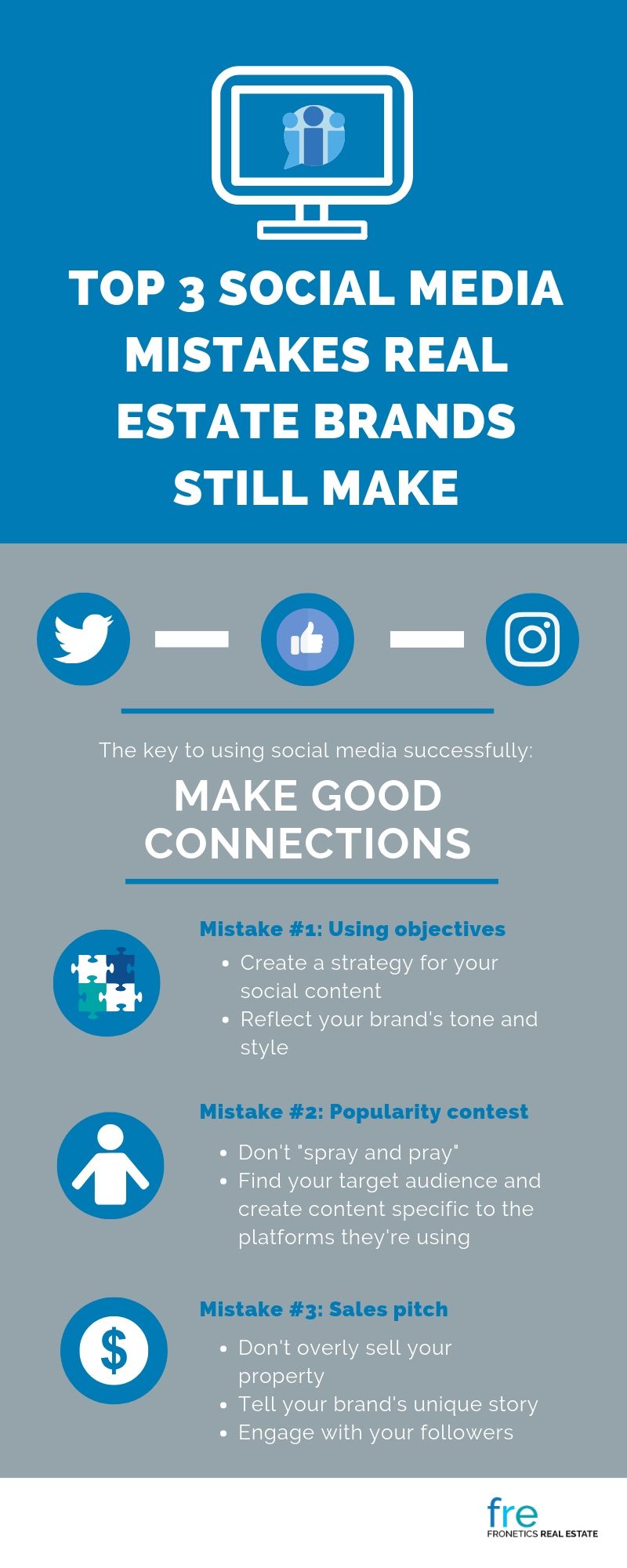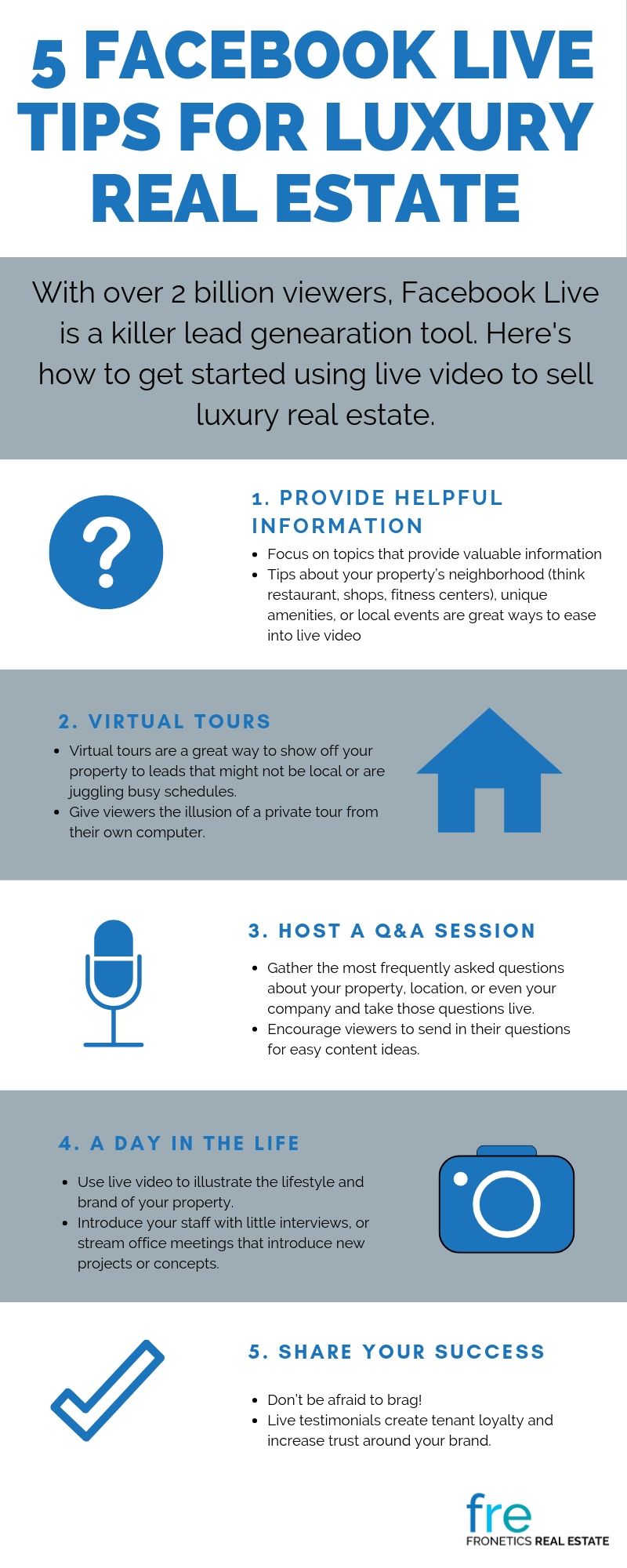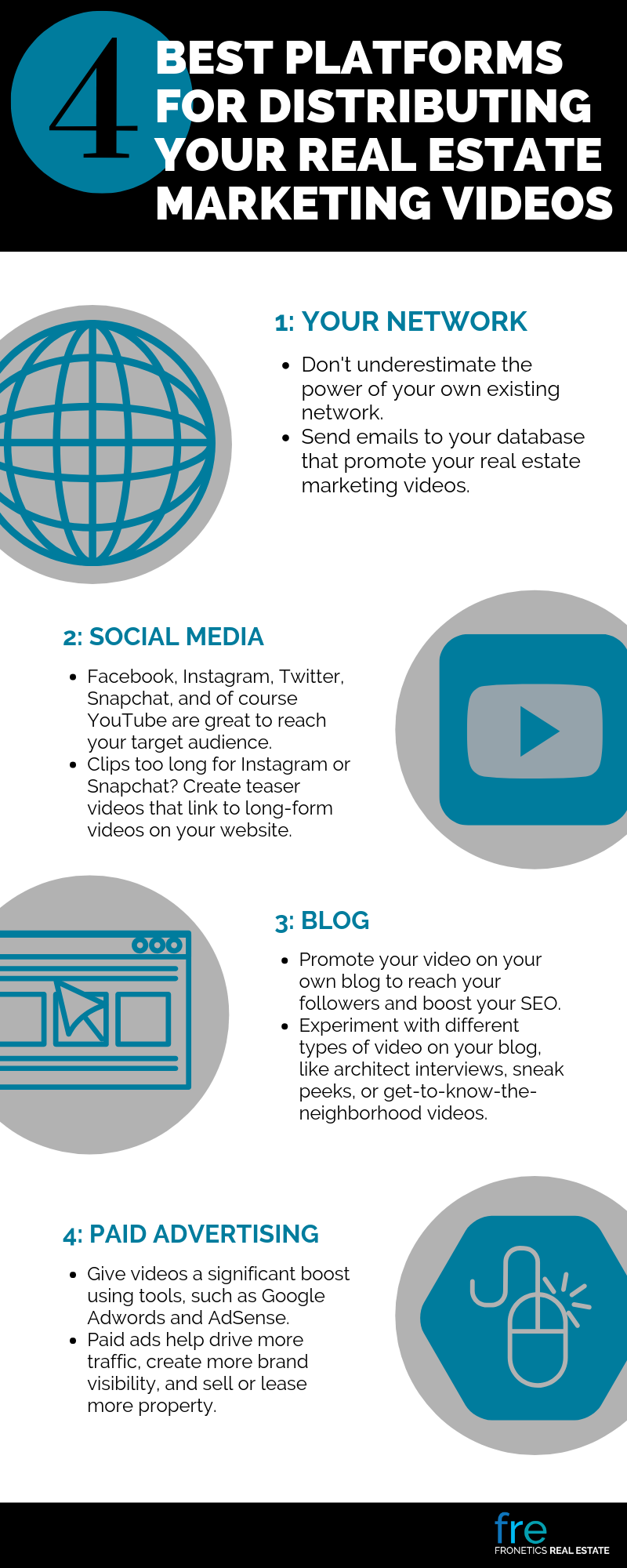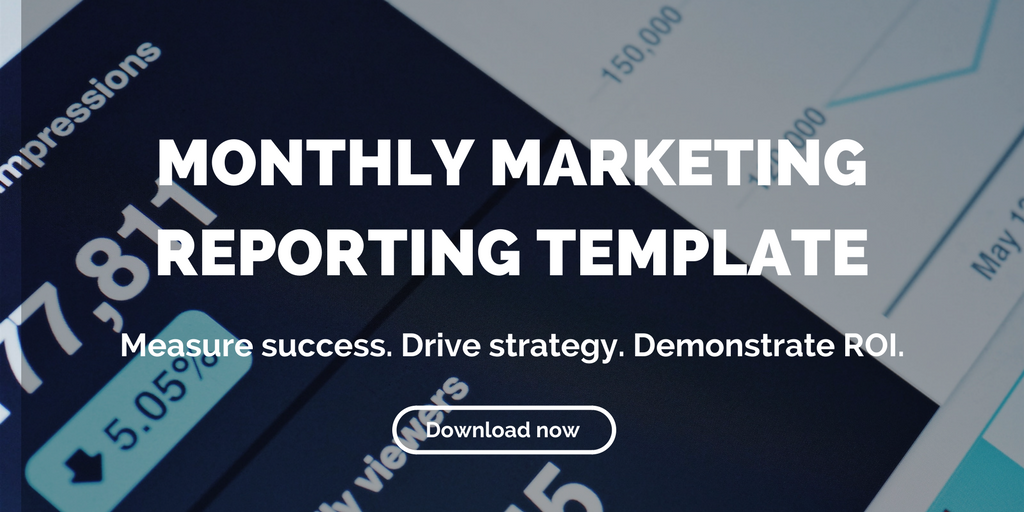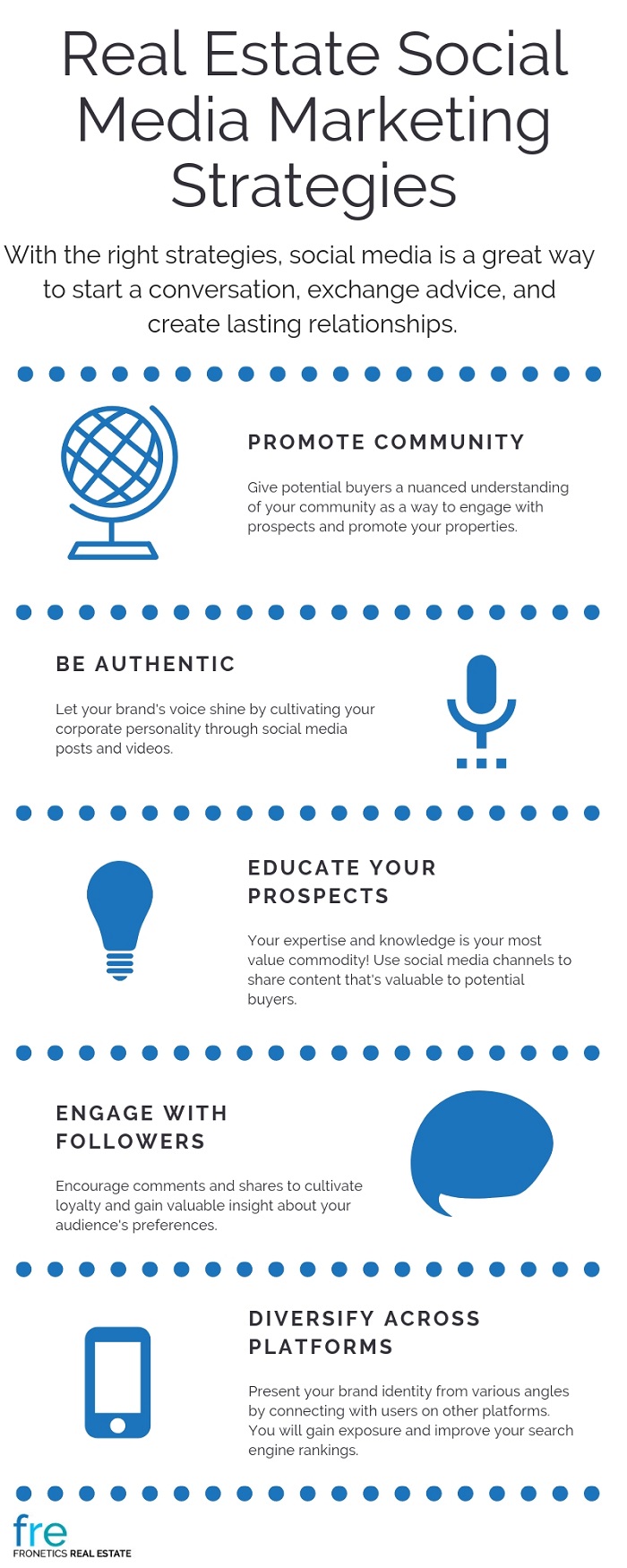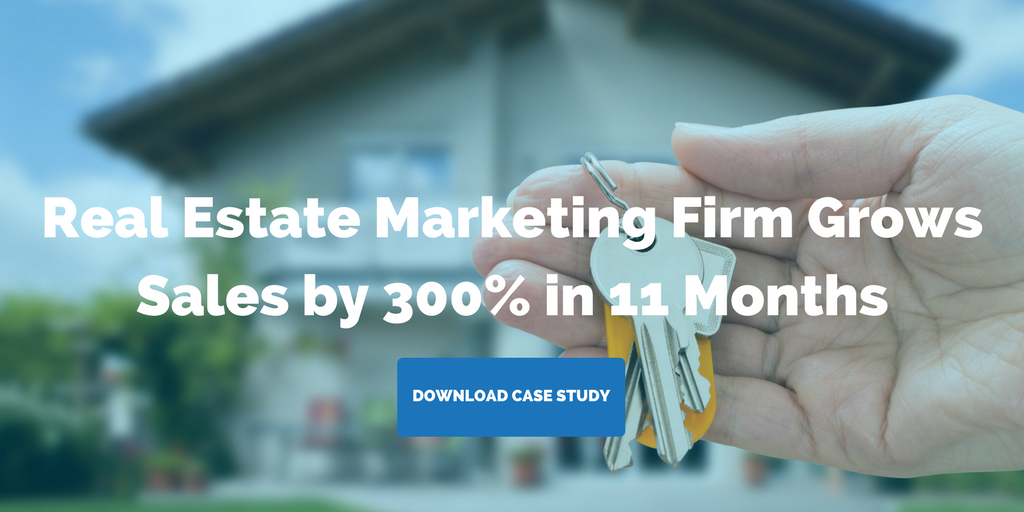Posts Tagged "infographic"

Infographic: Top 3 Social Media Mistakes Real Estate Brands Still Make
Social media is a valuable tool for real estate brands, but only if they use it to their best advantage and avoid these three common mistakes.
Highlights:
- Social media is one of the most effective ways to increase brand awareness and generate leads.
- All social media channels have a differentiating quality that makes them appealing to specific audiences. Don’t try to tackle every platform, focus on where your target audience is spending time.
- Real estate brands that succeed on social media are finding innovative and creative ways to engage and connect with their users.
91% of real estate professionals use social media. And we all understand why. By 2019, it is estimated that there will be around 2.77 billion social media users around the globe. That’s a lot of potential customers.
So it’s easy to understand why real estate brands are using social channels to boost their marketing efforts. Social media is an easy and effective way to increase your properties visibility and reach new audiences, but only if you use it correctly.
Top three social media mistakes real estate brands make
Mistake #1: Using objectives
Marketers need to use strategy to effectively utilize social channels. With the constant updates and changes to social platforms, real estate brands need to plan out content, frequency of posts, and pillar topics. Instead of posting with objectives in mind — like increasing leads — try to create posts that reflect your brand, follow your style guidelines, and reflect your brand’s tone.
A clear strategy can also help improve ROI. Almost two-thirds of marketers still struggle to prove their marketing efforts on social platforms are working. With a defined social media strategy, you can create specific goals, track and measure your efforts, and make changes when needed.
Mistake #2: Popularity contest
It’s easy to think that posting on all the most popular social channels is the best idea. Think again. Social media platforms have specific qualities that make them popular among audiences. Real estate marketers need to identify their target audience and find out what social channels they are using.
The next step is to create content that aligns with those platforms. As marketers, we know how easy it is to post the same content across all platforms. The success behind social media is authenticity and engagement, so it’s important your posts reflect this. Create content, like video, that caters to social channels to help build brand awareness and loyalty.
Mistake #3: Sales pitch
Being overly “salesy” will make prospects run – maybe right into your competition. The best way to win buyers on social media is through engagement. Content that helps prospective buyers envision themselves in your property is what will increase your organic reach. Create innovative and informative content that stands out on social channels by telling your brand’s story. This unique perspective will help create an emotional connection will have a long-lasting impact on viewers and drive brand loyalty.
Related posts:
- 5 Creative Ways to Use Instagram Stories for your Luxury Real Estate Brand
- Measure Social Media Success in Terms of Potential, not Dollar Amount
- How to Use Social Media Hashtags in Real Estate Marketing
Posts Tagged "infographic"

Infographic: 5 Tips for Using Facebook Live for Real Estate Brands
Live video marketing is one of the best and most cost-effective ways to grow brand awareness and generate leads. Here are five tips for using Facebook Live as part of your video marketing strategy.
Highlights:
- Facebook Live’s average daily views doubled year-over-year with over 2 billion users.
- Virtual tours on Facebook Live are a great way to show off your property to leads that might not be local or are juggling busy schedules.
- A live testimonial provides an opportunity for clients to talk about your property, creating customer loyalty and increased brand trust.
As a real estate marketer, you’re well aware of the popularity of video this year. Video is everywhere and the trend isn’t slowing down. Fifty-four percent of consumers actually want to see more video content from brands.
So while more real estate brands are increasing use of video in their digital marketing strategy, some are still hesitant to use live video options, like Facebook Live. I get it, going live is scary. With other video options, you can easily delete and start over. Live video gives you one shot to get it right. And not everyone will join your video when you start, so it’s key to iterate your main points several times without sounding redundant.
But don’t let your nerves stand in the way of trying Facebook Live. Initially launched in 2015, the live video streaming platform has soared in popularity by giving viewers an up-close and personal look at real estate brands. In just two years, Facebook Live’s average daily views doubled year-over-year with over 2 billion users and those who watch videos will spend three times as much time on a Live video than a produced one.
It’s easy to see with numbers like that how Facebook Live can help grow brand awareness and start generating leads. Here are 5 tips to get you using Facebook Live for your real estate brand.
Infographic: 5 tips for using Facebook Live for real estate brands
-
Provide helpful information
We talk a lot about the importance of high quality, valuable content and the same holds true for live video. Try to focus on topics that will provide valuable information for your viewers. Tips about your property’s neighborhood (think restaurant, shops, fitness centers), unique amenities, and local events let you ease into live video by covering topics that you’re comfortable with and knowledgeable about. And viewers will find them useful, too.
-
Virtual tours
They say a picture speaks a thousand words, so imagine what live video can do! Don’t just talk about the key features of your property — show your viewers. Virtual tours on Facebook Live are a great way to show off your property to leads that might not be local or are juggling busy schedules. Seeing your property in real time will give viewers the illusion of a private tour from their own computer.
-
Host a Q&A
Hosting a question and answer session is one of the easiest ways to get your feet wet with live video. Think about the most frequently asked questions about your property, your location, even your real estate brand and take those questions to Facebook Live. Don’t be afraid to start a Q&A–series where you address questions on a regular basis. Encourage viewers to send in their questions for easy content ideas.
-
Day in the life
Use live video to show the human side of your real estate brand. Introduce your staff with little interviews and stream office meetings that introduce new projects or concepts. This inside look shows who you are and what your brand stands for, which helps build trust in your company and your properties.
-
Tell your success stories
People love a good success story and if a recent buyer (or leasee) is willing to go on camera to rave about your property, you should jump at the opportunity. As a marketer, you know that customer testimonials serve to increase trust, so why not showcase your satisfied clients? A live testimonial provides an opportunity for clients to talk about your property, creating customer loyalty, and increased brand trust.
Final thoughts
Live video is an ideal way to establish your credentials and generate leads. With Facebook Live, real estate brands ca boost brand awareness, build trust, and increase engagement. Use these tips to make live video work for you. Need help getting started? You know where to find us.
Related posts:
- 3 Ways to Boost Your Real Estate Marketing with Video
- Infographic: Best Video Distribution Channels for Real Estate Marketing
- 6 Simple Tools for Creating Animated Real Estate Marketing Videos
Posts Tagged "infographic"

Infographic: Best Video Distribution Channels for Real Estate Marketing
Knowing the right video distribution channels for your real estate marketing videos can go a long way toward driving traffic and getting your content to your target audience.
Highlights:
- Choose video distribution channels that match your marketing goals.
- Don’t underestimate the power of your own network — use this network as the starting point for distribution.
- Paid ads can give video an extra boost.
You made the leap and embraced video marketing, the latest trend in digital marketing. The videos are informative and show what makes your brand unique, BUT they are not getting the views or shares you were expecting.
After dedicating your time and hard work (not to mention, marketing dollars), you want to make sure your real estate marketing videos are getting in front of your target audience and helping move buyers down the sales funnel. How can you do that? The answer is distribution.
Choosing the right platform (or platforms) to distribute your videos will help boost reach and ROI. But how do you know what platforms are right for you? Platforms and marketing trends are constantly changing; it’s hard to know which distribution channels are best for your target audience. Let us help.
Here are the four best video distribution channels for your real estate marketing videos.
1. Your network
Don’t underestimate the power of your own existing network. Send your videos, via email, to your primary contacts and everyone in your current database. In a recent study, emails with video had a 96% higher click-through rate than emails without video. With such increased engagement numbers, including video in your emails is surely a homerun.
2. Social media
Platforms like Facebook, Instagram, Twitter, Snapchat, and — of course — YouTube are great to reach your target audience. Within the social media category, you want to consider which platforms suit your content best. YouTube is a great place to start, but there are also many real estate specific online forums and social groups that can benefit you as well.
And don’t worry if you have longer videos that won’t work for platforms like Instagram. You can easily create teaser videos for promotion on Instagram that link to your long-form videos embedded on your website or video channel.
3. Blogs
Blogs are one of the easiest ways to drive organic traffic and increase lead generation. Promote your video on your own blog to reach your followers and boost your SEO. Blogs are also a great place to experiment with different types of marketing videos. Whether video tutorials, interviews, or even “Get to Know Us” videos, your blog is great place to capitalize on your videos by integrating them into your existing marketing efforts.
4. Paid ads
While the first three video distribution channels that we discussed are organic, sometimes it is well worth it to use paid ads to give your videos a significant boost, such as Google Ads. Paid ads help get your videos in front of prospective buyers and renters faster than would happen organically. Pair quality video with a comprehensive digital advertising strategy, and you will be in a position to drive more traffic, create more brand visibility, and sell or lease more properties.
Bottom line
We live in a highly visual world. Real estate marketing with video is an immediate and effective way to reach your audience and show them what makes your brand and properties special. Using the right video distribution channels helps you get the most out of your video marketing efforts.
Related posts:
- 6 Simple Tools for Creating Animated Real Estate Marketing Videos
- 4 Real Estate Blogging Tools You Should be Using
- 3 Ways to Boost Your Real Estate Marketing with Video
Posts Tagged "infographic"

Twitter and Real Estate Marketing: 3 Tips to Get You Started
Thinking of using Twitter to market your real estate brand? The social media platform helps build brand awareness and boost engagement. Here are three tips to get you started with Twitter and real estate marketing.
Highlights:
- When real estate brands are looking to grow audiences, increase brand awareness, and boost engagement, social media is an ideal place to start.
- It’s key to have a strategy that outlines the methods by which you will target, reach and engage prospects. It also helps to keep tweets in line with brand messaging.
- using social media for real estate marketing is a great way to start a conversation, exchange advice, and create a lasting relationship with prospects.
When you think about social media, you think about people. Social media platforms have skyrocketed in popularity due to its ability to connect people, and this is why social media has become such a valuable asset to marketers.
When real estate brands are looking to grow audiences, increase brand awareness, and boost engagement, social media is an ideal place to start. But it’s not as easy as signing up and pushing out a few tweets. Here are three tips every real estate brand needs to know about using Twitter to market your next project.
Three tips to get real estate marketers started on Twitter
1. Start with a strategy
Marketers are often tempted to jump right in and start shooting out tweets. But as with any digital marketing effort, it’s best to start with a plan. A strategy outlines the methods by which you will target, reach and engage prospects. It also helps to keep tweets in line with brand messaging.
Make sure your Twitter and real estate marketing strategy includes a content calendar that’s full of valuable, informative content. Don’t be afraid to think outside of the box when it comes to marketing. The largest percentage of users on Twitter are millennials (not surprising), so make sure your content calendar includes topics that readers find interesting: hot spots in your property’s neighborhood, seasonal community events, and features from your property.
2. Use visuals (including video)
Twitter is all about the visual. In fact, tweets with pictures or videos receive 18% more likes and 150% more retweets. Since video is the most popular and most widely shared form of online content right now, it’s smart marketing to incorporate video into your tweets. Think about supporting your content through visually appealing videos, such as quick interviews, breaking news updates, or even how-to demonstrations, infographics and pictures. You’ll be making a lasting impression, attracting new followers and driving traffic to your website.
3. Engage
Don’t be shy! Once you’ve started tweeting and gain followers, get in there and start engaging. Ask questions, like, and re-tweet posts. Just remember to keep your engagement informative by focusing on insightful and interesting content.
We encourage our real estate clients to show what makes their brand unique when engaging with followers. This honest view into your company allows followers to feel comfortable with your brand and easier to engage with. Like I mentioned before, social media and real estate share the ability to connect people. Don’t be afraid to show the “human” side of your brand.
These three strategies will help get you started with Twitter and real estate marketing. With the right strategies, using social media for real estate marketing is a great way to start a conversation, exchange advice, and create a lasting relationship with prospects. Looking for more tips on creating or updating your social media strategy? Shoot us an email.
Related posts:
- The Top 3 Social Media Mistakes Real Estate Brands Still Make
- 5 Tips for Building a Successful Real Estate Social Media Marketing Program
- Infographic: Real Estate Social Media Marketing Strategies
Posts Tagged "infographic"

Infographic: Real Estate Social Media Marketing Strategies
Social media for real estate marketing is one of the most powerful tools out there. Our infographic will help you figure out the best social media marketing strategies—and the mistakes to avoid.
We’ve said it before, and we’ll say it again: real estate marketing and social media are a match made in heaven — when used correctly. With the right strategies, using social media for real estate marketing is a great way to start a conversation, exchange advice, and create a lasting relationship with prospects.
We can’t stress enough that to be effective, social media needs to be done right. Bubba Mills, chief executive officer of Corcoran Consulting & Coaching advises, “done right, social media can increase your trips to the bank. Done poorly, it can drive you to the poor house.” Take a look at our infographic with social media do’s and don’ts for real estate marketers.
What you should be doing: social media marketing strategies
Promote the community, not just your properties
Renters, buyers, and investors are looking for more than just a property — they want to know something about the place they’re considering living or investing in. Too many real estate blogs just skim the surface of what communities have to offer. Making use of social media platforms to give potential buyers a nuanced understanding of your community is a great way to engage with prospects and promote your properties.
Be authentic
Social media for real estate marketing is all about the personal. Users on these platforms are looking to connect with the real people behind the brands they follow. Part of building your brand is about discovering and cultivating your “corporate personality,” particularly when it comes to social media. Find your brand’s voice, and let it shine through.
Educate your prospects
You may not expect it, but social media users actually like educational content. According to the 2018 Sprout Social Index, 59% of customers express greater trust for “posts that teach” on social media. Educating your audience is also at the core of content marketing — at the end of the day, your knowledge and expertise is your most valuable commodity — even more so than your properties. Use your social media for real estate marketing to share content that’s valuable to potential buyers and renters, whether it’s buying guides, case studies, or local statistics.
Engage with your followers
It may seem painful obvious, but too many real estate marketers forget that social media is just that: social. When followers engage with your posts, always reply! Encourage comments and shares, and join the conversation. Not only is it a great way to cultivate a loyal following, but you can also gain valuable insights into your audience’s preferences.
Diversify across platforms
While Facebook still reigns supreme in the social media universe, if you aren’t connecting with users on other platforms, you’re missing out on huge opportunities. While each platform requires its own content and posting strategy, you’re essentially presenting your brand identity from the various angles allowed by different platforms. Not only that, using multiple social media platforms helps improve your search engine rankings.
Steer clear of these practices
Overzealous advertising
Nobody likes pushy sales language, especially on social media. Steer clear of posts that do nothing but overtly promote your properties. Instead, focus on educating your audience, and answering their questions.
Forgetting the visual
Social media is all about the visual, especially video. Be sure to include relevant images with posts and use video whenever possible.
Assuming that just because you’re online, offline rules don’t apply
It may seem obvious, but it’s all too often forgotten. This is a good rule, and an easy metric by which to judge any content before posting: Your interactions online should measure up to professional interactions you would have in person.
Reposting without checking
Re-posting content that’s of interest to your audience is a great way to promote discussion and engagement. But don’t get sloppy. Remember that even if content didn’t start with you, if it’s posted on your company’s social media accounts, it represents your brand and properties. Make sure content is well-researched and from reliable sources. Want to re-post something controversial? Just be sure to include a disclaimer or explanation in your post.
Forgetting about emotional intelligence
Never forget that behind every social media account is a human being. The bottom line: bring emotional intelligence to your social media management. Take the time to address any issues with compassion and understanding.
The takeaway
With the right strategies, social media is an extremely effective tool for real estate marketers to promote their brand and properties. But it does require a significant investment of time, resources, and creativity. Start connecting with your audience, and watch your brand grow.
Related posts:

